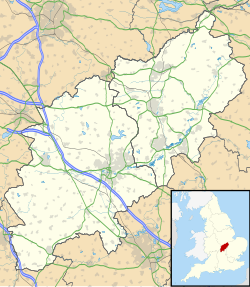| Cotton End | |
|---|---|
 View from West Cotton Close, Cotton End looking east towards the White Hart pub on the road 'Cotton End' | |
Location within Northamptonshire | |
| OS grid reference | SP750596 |
| • London | 67 miles |
| District | |
| Shire county | |
| Region | |
| Country | England |
| Sovereign state | United Kingdom |
| Post town | NORTHAMPTON |
| Postcode district | NN4 8B_ and NN4 8R_ |
| Police | Northamptonshire |
| Fire | Northamptonshire |
| Ambulance | East Midlands |
| UK Parliament |
|
Cotton End is a small district of the town of Northampton, England, about half a mile south of the town centre, north of the area known as Far Cotton and west of the road from South Bridge to Ransome Road known as Cotton End. [1] The district population is included in the Delapre and Briar Hill Ward of Northampton Council.






